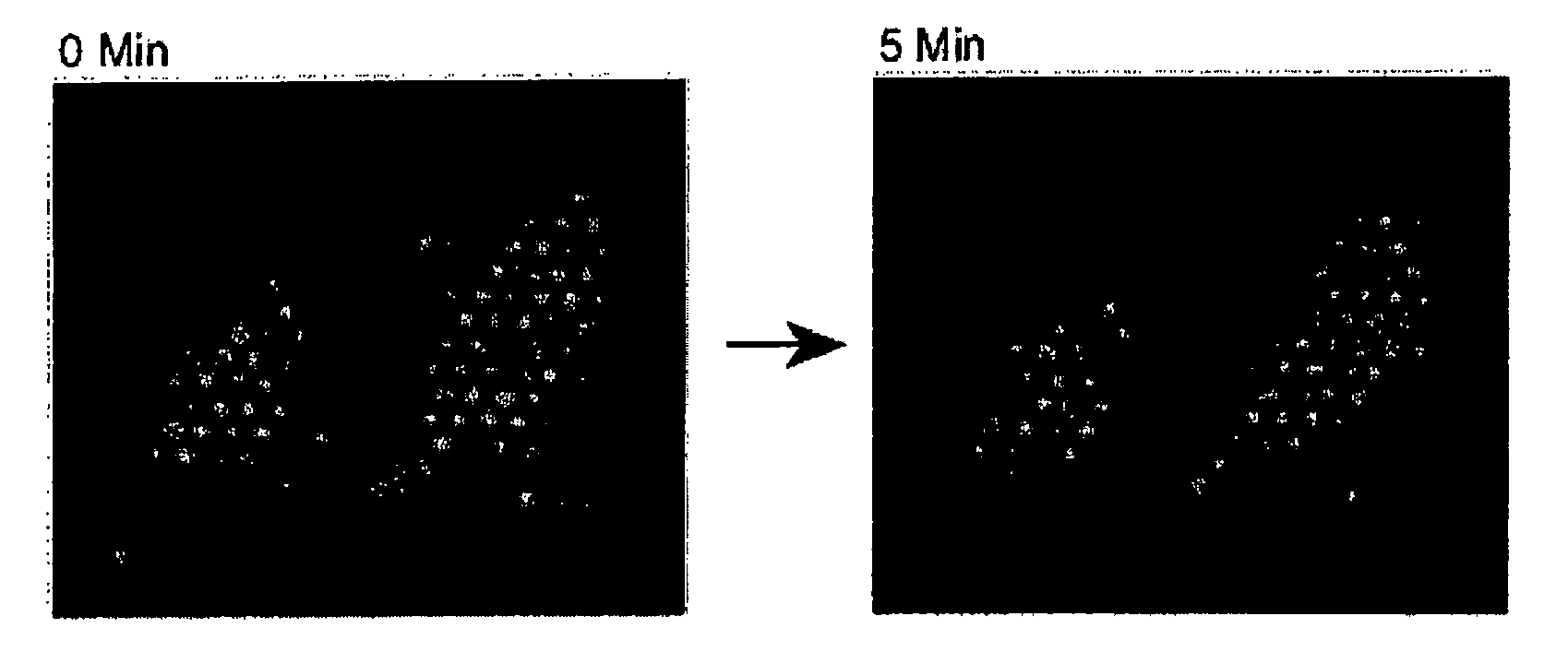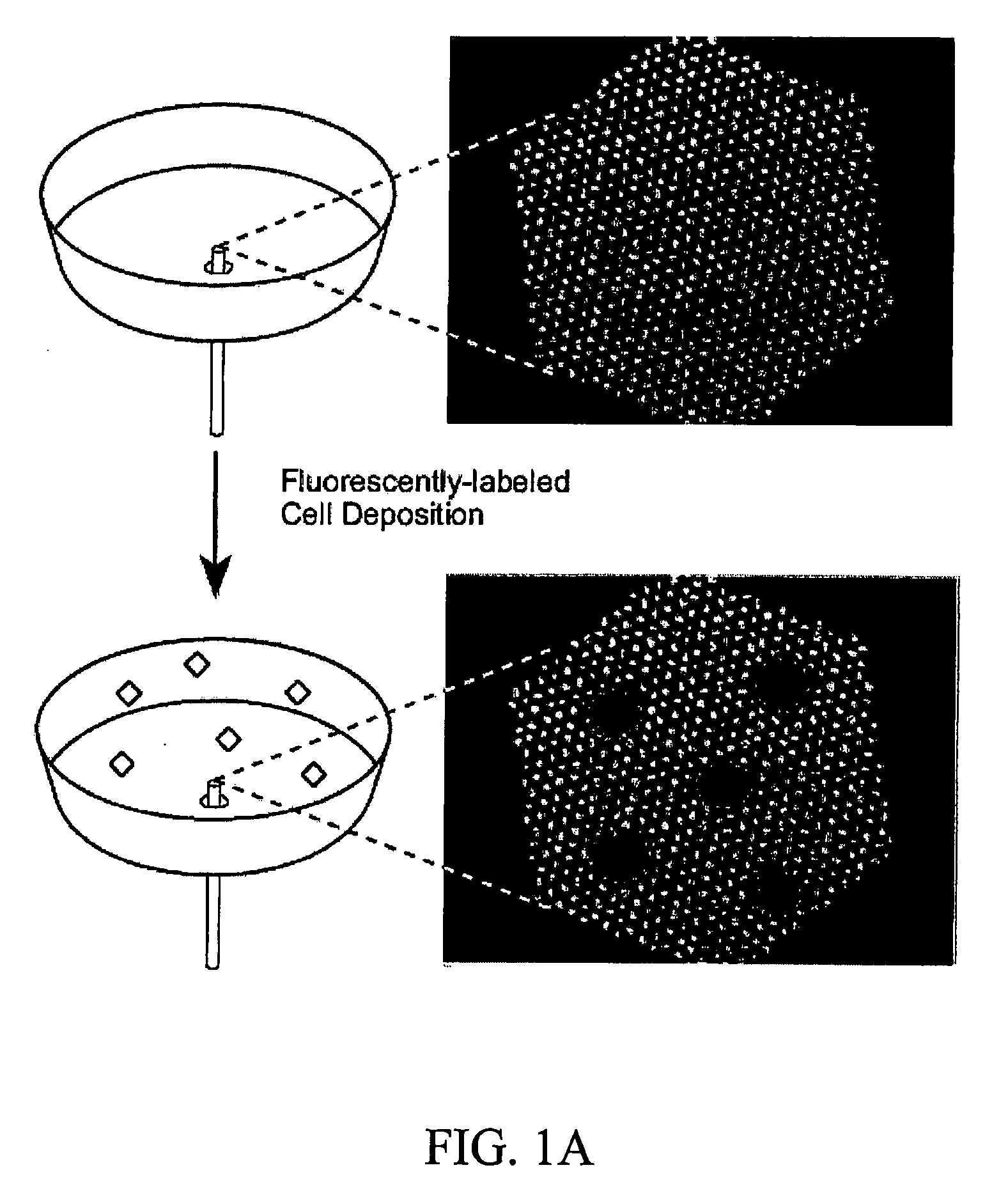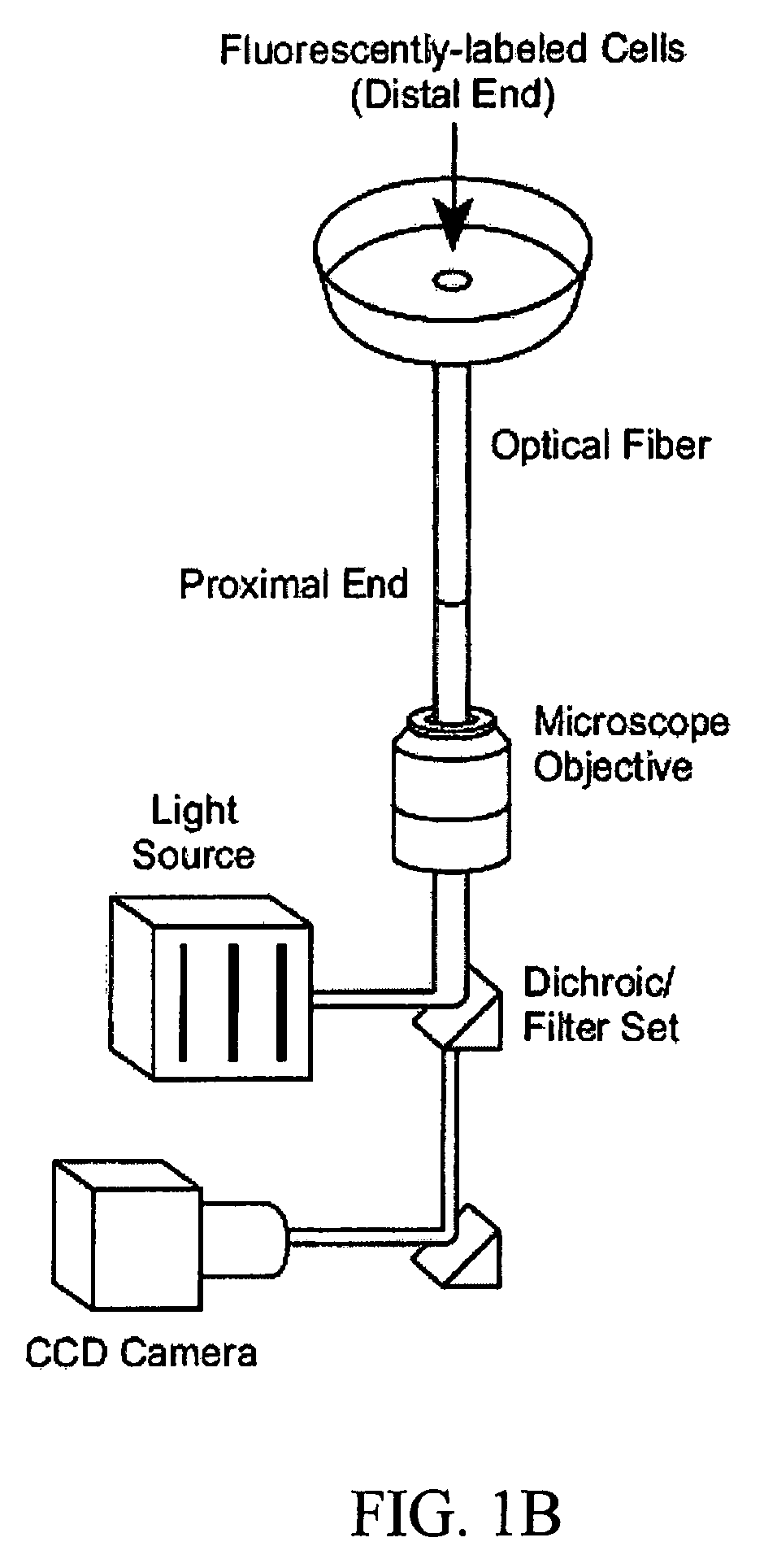Apparatus and method for cell migration assays
a cell migration and apparatus technology, applied in the field of apparatus and method for detecting cell migration, can solve the problems of inability to examine individual cell migration, suffer from several limitations, and suffer from immune suppression, nausea and kidney damag
- Summary
- Abstract
- Description
- Claims
- Application Information
AI Technical Summary
Benefits of technology
Problems solved by technology
Method used
Image
Examples
examples
Methods
[0110] NIH / 3T3 fibroblasts were obtained from American Type Tissue Collection (ATCC No. CRL-1658). Dulbecco's modified eagle medium, penicillin-streptomycin, L-glutamine, calf serum, trypsin-EDTA were obtained from Invitrogen (Carlsbad, Calif.). Fibronectin was obtained from Calbiochem-Novabiochem Corporation (La Jolla, Calif.). Live / Dead Viability / Cytotoxicity kit for animal cells and Vybrant DiO cell-labeling solution were obtained from Molecular Probes (Eugene, Oreg.). Nocodazole and sodium bicarbonate were obtained from Sigma Chemical Co. (St. Louis, Mo.). Fiber-optic imaging bundles were obtained from the Schott Corporation (Southbridge, Mass.) and Illumina, Inc. (San Diego, Calif.). Delta T4 culture dish system, and delta T culture dishes were obtained from Bioptechs (Butler, Pa.). Aluminum oxide lapping films were obtained from Mark V Laboratory (East Granby, Conn.).
[0111] After labeling, the cells were allowed to settle and adhere to a fibronectin-coated fiber bundl...
PUM
 Login to View More
Login to View More Abstract
Description
Claims
Application Information
 Login to View More
Login to View More - R&D
- Intellectual Property
- Life Sciences
- Materials
- Tech Scout
- Unparalleled Data Quality
- Higher Quality Content
- 60% Fewer Hallucinations
Browse by: Latest US Patents, China's latest patents, Technical Efficacy Thesaurus, Application Domain, Technology Topic, Popular Technical Reports.
© 2025 PatSnap. All rights reserved.Legal|Privacy policy|Modern Slavery Act Transparency Statement|Sitemap|About US| Contact US: help@patsnap.com



